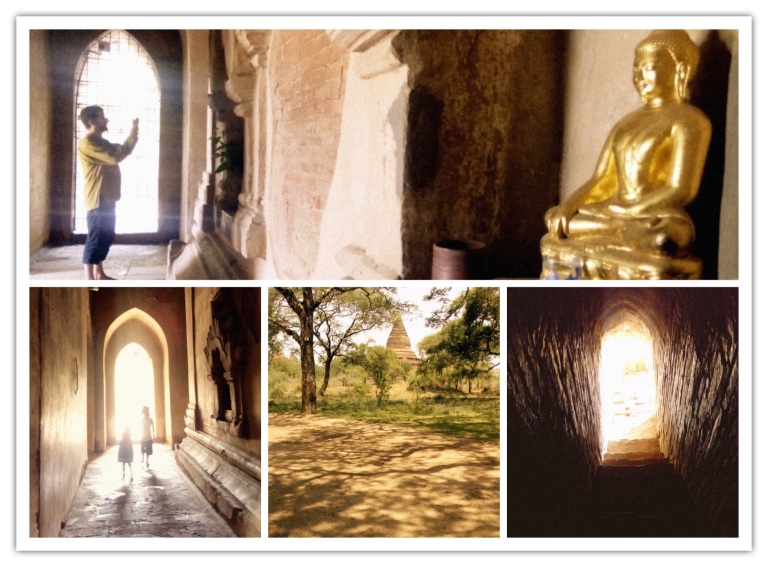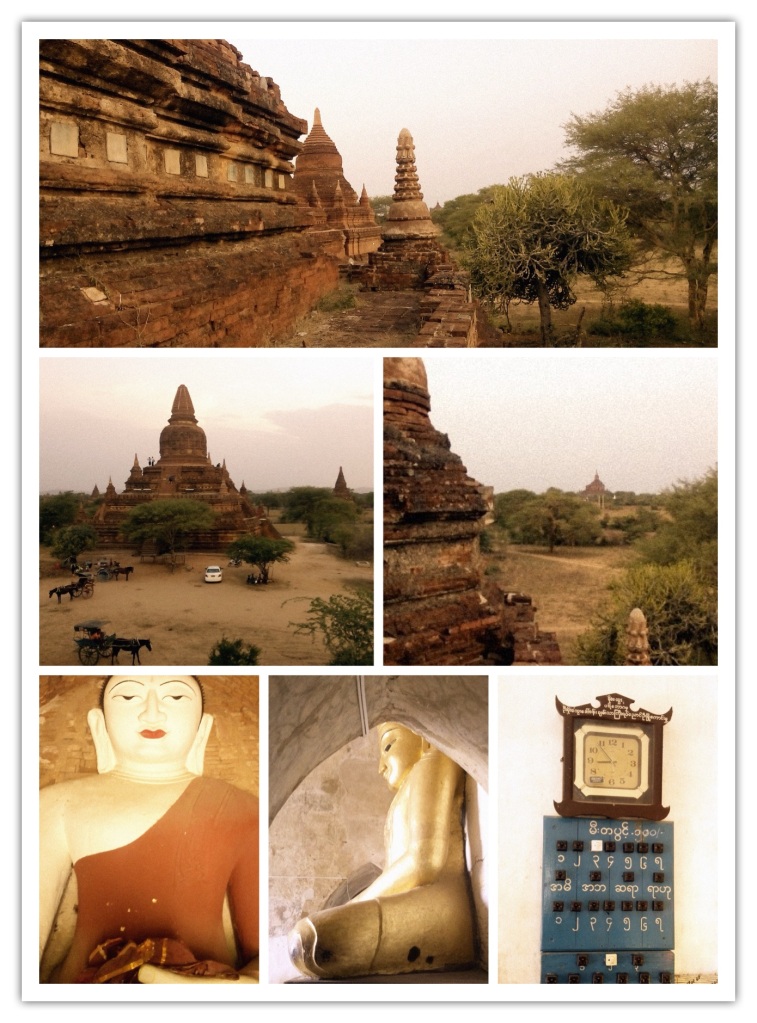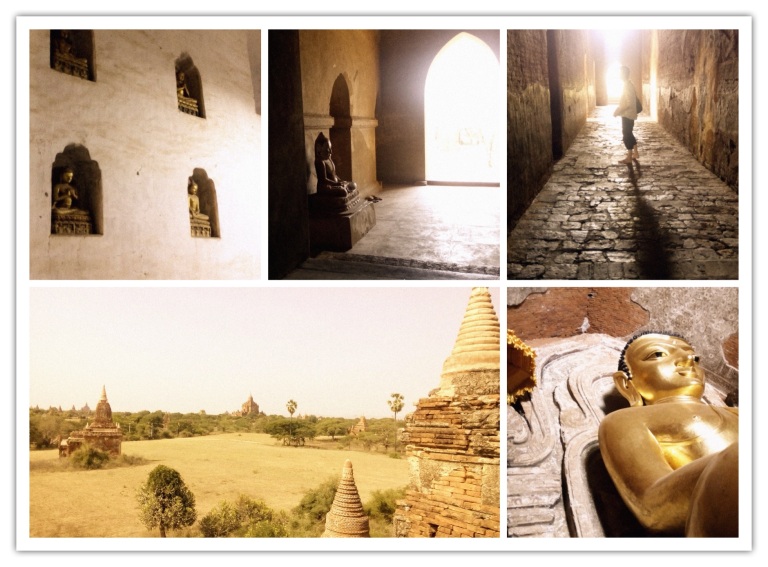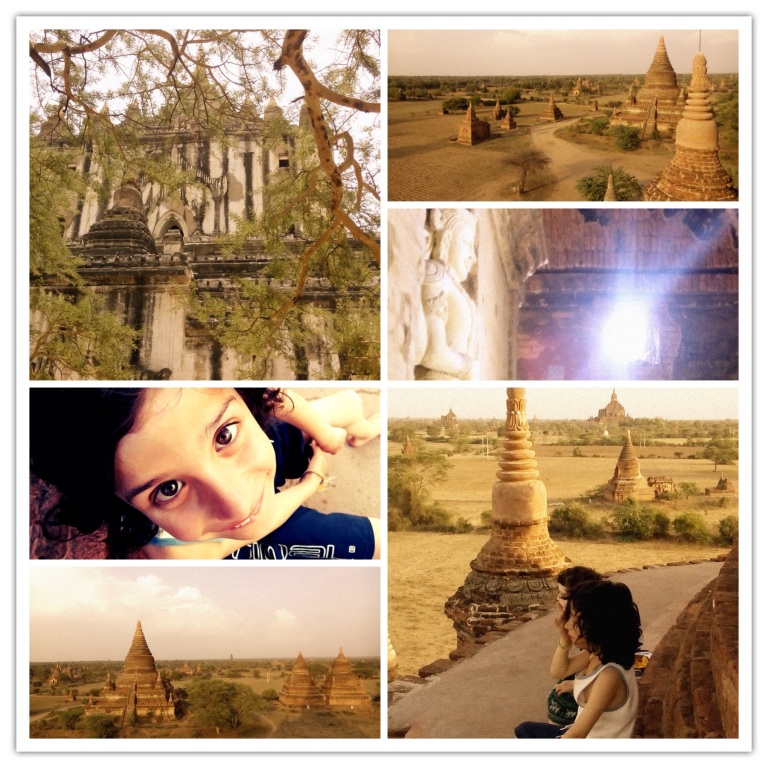Bagan, the fabled site where thousands of rust coloured stupas, temples and pagodas dot the horizon of a vast desert plain like an endless field of still flowers, had simply been the stuff of travel dreams. For me the oft described valley where the pinapple-shaped constructions of the Irrawaddy basin bloomed was at once the preserve of documentaries and National Geographic articles and, now, a destination we had adjusted our sail towards.
We had left Nyaung Shwe on Inle Lake as the sun began to sink over the ricochet town scape. A few fellow travellers had gathered. In the darkness the bus journey was defined by one thing and one thing alone, a TV that blared out brain cell churning Burmese soap operas that reflected the bizarre travails of the ruling classes of Burma. All of the settings appeared artificial, golf green lawns, gated palaces, bucolic parks.
With punctured sleep we were jolted awake at 3.30am at our destination. By the time we crawled in to the Pann Cherry guest house eyes stung from lack of sleep and the heat, even in the early hours, was a portent of what we would experience in the next few days. We arose the next day as early as our tired bodies allowed and downed the now obligatory breakfast of mohinga, fried bread and coffee in a neighbouring tea house. Then it was off to find the best way of venturing out towards Old Bagan. We considered the few options that existed to be transported around the temples and stupas, and opted for a horse-drawn cart with the intention of supporting a local economy where, we had read, required the tourist kyat to sustain itself. The man at the reins spoke little english but had the names of all the temples and the geographic wherewithal to enhance our captivation. He spoke to the horse in an undulating cadence that was both hypnotic and effective and lay testament to the relationship between them. M and G sat excitedly on the antiquated carriage that was roofed like a tuk tuk. At times we felt we were all alone in this vast expanse as we trundled off road and peered at the stationary parade of stupas from under the branches of cotton trees, the advantages of off season travel oozing romance.
There are almost three thousand standing temples and stupas in Bagan, the largest and densest concentration in the world, even so many have disappeared in the sand or have fallen victim to the Irrawaddy flood currents, others crumble slowly from ruin, the result of an earthquake in 1984. Due to wind erosion the constructions have been largely stripped of their outer stucco coat and so red brick is left to soak in the suns rays.
As we approached midday the heat rose from the parched soil in waves, it was stifling and the pleasure of entering the dark cavernous temples to suck in their cool air was pure relief. The temple known as ‘Ananada’ meaning ‘boundless wisdom’ takes prominence over all others in terms of size and splendour. We entered via a mosaic shouldered tunnel, at our sides book stands sold mostly photocopied history and travel books and the ubiquitous copy of Orwell’s Burmese Days. High above our heads hundreds of bats hung from shadowed ceiling and swallows whizzed past our heads, seeking a window to release themselves out in to the burning heat of day. M and G took advantage of the heat reprieve and scurried around the temple as if seeking lost treasure. They found huge golden Bhudda’s at all compass points and mirrored the adjoining devotees genuflections with three bow’s of the head. In the evening we climbed the vertiginous Shwegugyi temple and watched a setting sun cast its magical spell over the huge plain, the tangerine light gently silhouetting the stupas.
The following day we opted for electric bikes to traverse the area and enjoyed the freedom to accidentally explore, many times finding ourselves at a crossroads and going with gut. But wherever we went in Bagan we were treated to one vista or another that seemed to span the ages and, it being the off season, allowed for the sense of being relatively alone in doing so. Where we did meet people it was often burmese tourists or locals, the majority of whom found great wonder in M and G and as has been the case in all of our travels our children acted as this wonderful hook to conversations with people.
It is easy to think of Bagan as photogenic landscape but it is, of course much more. Hidden behind the hardy rows of cotton trees, oxen plough the hard soil and vegetables are grown between the stupas, many of the tea houses and restaurants remain informal, without menus and give one the sense of being in an annexed room of a family home. We were left entranced and humbled by both Bagans.




